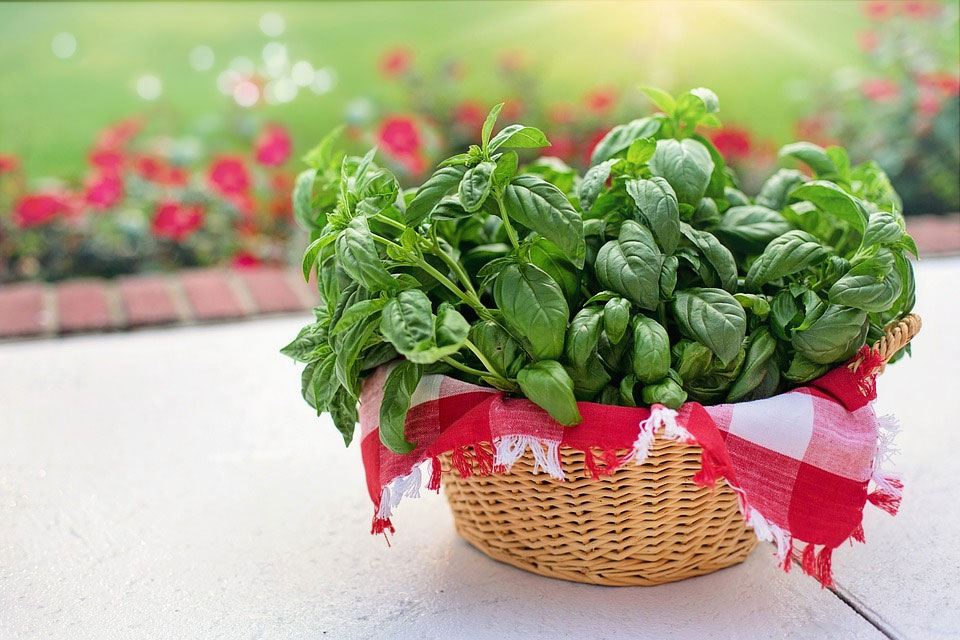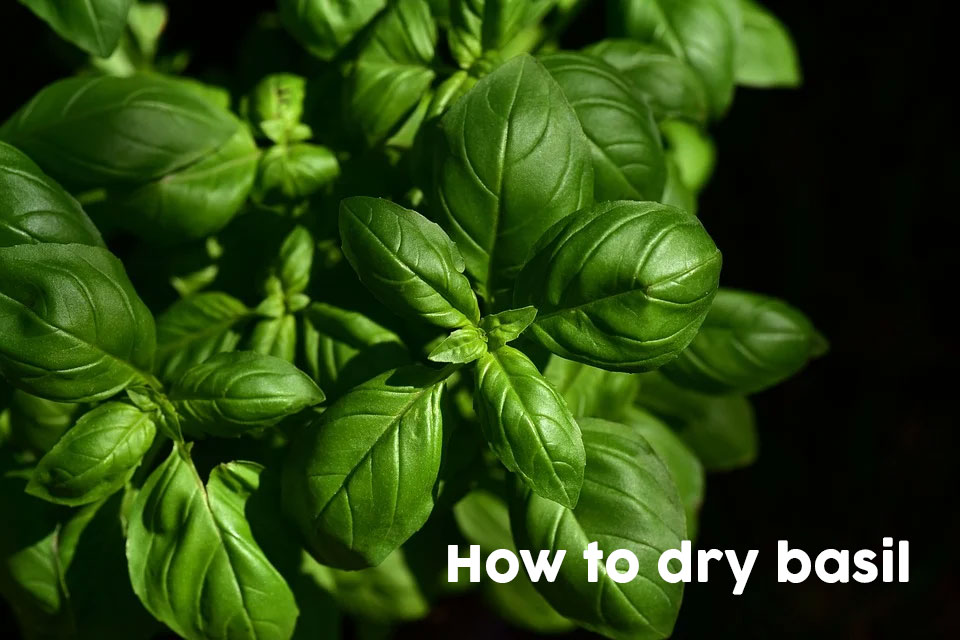Dried Basil Leaves – How to Dry Basil at Home
Fresh or dry, basil is the kind of herb that adds a strong flavor to your pizzas, pasta, and even serves as a garnish to your lemonade. What makes basil even more appealing as a plant from a gardener’s point of view is how easy it is to grow, harvest, and store it.
As a summer herb, you might wonder how to enjoy the great flavors of basil all year round. The answer is in drying and storing the leaves so that they maintain their aroma no matter how long you keep them. This article covers the basics of growing basil and the different methods of drying it.
All About Basil
Nothing says you know your way around the kitchen, and the garden for that matter, than a sprig of basil in your homemade lasagna or a few leaves floating majestically in your bowl of punch.
As part of the mint family, basil (Ocimum basilicum) has many varieties including:
- Sweet basil
- Thai basil
- Lemon basil
- Holy basil
As an annual herb, basil favors hot and dry weather conditions. For this reason, it’s often grown in the warm Southern regions of the country. It is sensitive to cold temperatures so the best way to grow it is inside a greenhouse where you have control over the temperature and humidity levels.
Basil is the herb of choice for many chefs thanks to the strong aromas it adds to various dishes. It’s also a staple in Italian, Thai, Vietnamese, and South Asian cuisines. In addition to these flavors, the herb has its nutritional values.
Basil is rich in potassium, magnesium, calcium, and iron as well as vitamins A and C. In traditional medicine it has been used to cure many health conditions including indigestion. This is thanks to flavonoids and anthocyanins. These polyphenolic compounds give it its therapeutic values.
Growing Basil
As a dedicated gardener, nothing tastes better than the food you grow in your garden with your own heads. The thing about basil is that it’s easy to grow once you provide the basic requirements of soil, warm temperature, and dry weather.
The following steps get you up to speed on what you need to do.
- Use a large pot since the roots of the basil plant don’t do well in shallow pots. The roots establish well in plenty of soil.
- Make sure the temperature is in the mid-fifties Fahrenheit. Basil thrives at high temperatures. So anything between 50 and 70 degrees Fahrenheit is acceptable. Keep the pots indoors until the weather warms up and the last frost is gone.
- Use a well-balanced soil with pH levels between 6.5 and 7. A well-drained soil helps the plant grow healthier. So avoid soaking the pot or leaving it to dry out. If the soil is heavy, add some sand to balance it out and improve aeration.
- Add mulch to improve water retention and organic compost when the leaves appear to encourage its growth.
- Keep the soil wet but not waterlogged during the dog days of summer. As the temperature rises, the plant needs more water. You can allow the top 2 inches of the soil to go dry. But test the soil with a stick to make sure the bottom isn’t dry.
- Once the plant establishes roots, you can add liquid fertilizer in moderate doses once a week.
- Prune the plant to encourage it to branch out and become bushy. Trim the top of the branches off just above the leaves so the plant will grow more branches.
- Remove any dead leaves and cut off the flowers. You only want the leaves of the herb.
- Make sure to remove the last leaves before the temperature drops again in the fall.
How to Harvest Basil
There are two ways to harvest basil leaves. Either gather the adult leaves as they mature on the plant and dry them in patches, or wait for the end of the summer and gather all the leaves together in one patch. The first method is time intensive but it produces a good harvest.
To pluck the leaves, use either a pair of sharp scissors or garden clippers. Scissors work better since they don’t damage the stalk of the plant. Clip the leaf at the stem just above the node. This will encourage the basil plant to grow more leaves. Plan your harvesting early in the morning when the leaves are fresh before the hot weather degrades their aroma.
It’s easy to find the growing node on the stalk. It’s right next to where two leaves grow in opposite directions. Leave about a quarter-inch below the node and cut the stems. Remember, this only applies to harvesting in patches.
For the end of the season harvesting, you can pluck all the leaves without worrying about the nodes or stems. The plant will not grow leaves again since the season is over. Don’t overestimate the harvested leaves. They will shrink to about half their current size once they’re been dried out.
How to Dry Basil the Easy Way?
With your harvested fresh basil leaves on the kitchen table, you’re ready for the next phase of the process. It’s arguably the most important one because it can make or break the freshness, flavors, and depth of aroma of your basil harvest.
There are 5 drying methods that work with basil leaves. Which one you choose depends on your resources, the time and patience you have, and how good you want your dried basil leaves to be for the rest of the year.
Air Drying
One of the easiest methods to get the basil leaves dry is to simply leave them out in the open air to dry on their own. You don’t have to do anything, just be patient enough to let them dry out thoroughly. To prepare the leaves for air drying, make sure the stems are equal size and wash them in a deep bowl.
Don’t handle the leaves roughly since they break easily. Just swirl them in the water to clean them then scoop them out. Lay them on a towel to dry. Now you need to tie them in bundles and hang them by the stems to dry in an airy place. They will take up to 4 weeks depending on how dry the air is before you can collect them and keep them in jars.
Sun Drying
To dry your basil leaves in the sun, you follow the same steps of parsing, washing, and drying the leaves we mentioned above. Now with the surface of the leaves dry and only healthy leaves remain in your collection, you can spread the leaves on a wire mesh and keep them in the sun.
This method is only suitable for hot regions that get plenty of sunlight all day. If it’s too humid or you have lots of shade, then the leaves will not dry well and might spoil. Make sure you don’t get strong wind that would blow the leaves away. Collect the dry leaves and keep them in jars.
Microwave
If air drying and the sun methods are too time-consuming for you and you’re in a hurry, then a microwave can come to your rescue. It’s not weather reliant and you can do it just about any time you feel like. So in a way, it’s the most convenient method so far.
Keep in mind that you cannot dry your whole harvest in one go using a microwave. So in a way, it works best for when you gather your leaves in small patches throughout the summer. Set the microwave to medium and the timer for 20 seconds at a time. Repeat it a few times until the leaves are thoroughly dry.
Food Dehydrator
A food dehydrator is an effective way to dry your basil without the drawbacks that come with using the microwave. You won’t have to worry about setting the food dehydrator too high or too low. They’re designed to dry food items, it’s right there in the name. The only drawback here is that it would take longer than with the microwave. So patience is required.
Set the dehydrator to 95 degrees Fahrenheit and leave it running for anything between 12 and 24 hours. You don’t have to check on it since the dehydrator is gentle on the leaves and you don’t have to flip them over or give them a break the way the microwave method requires.
Oven Drying
You can use your oven to dry basil leaves if you don’t have a food dehydrator and think the microwave is too much of a hassle. But it does need your full attention. The oven might get rid of the moisture in the leaves but if you’re not careful it could burn them as well.
Spread the leaves on parchment paper and set the oven to a medium to medium-high temperature. Don’t go overboard else the leaves would shrivel up and burn. Keep the leaves away from each other so they don’t stick together. After they’ve dried up, pull them out one by one and set them aside to cool off. Now put them in a jar and tighten the lid to keep them fresh for the rest of the year.

